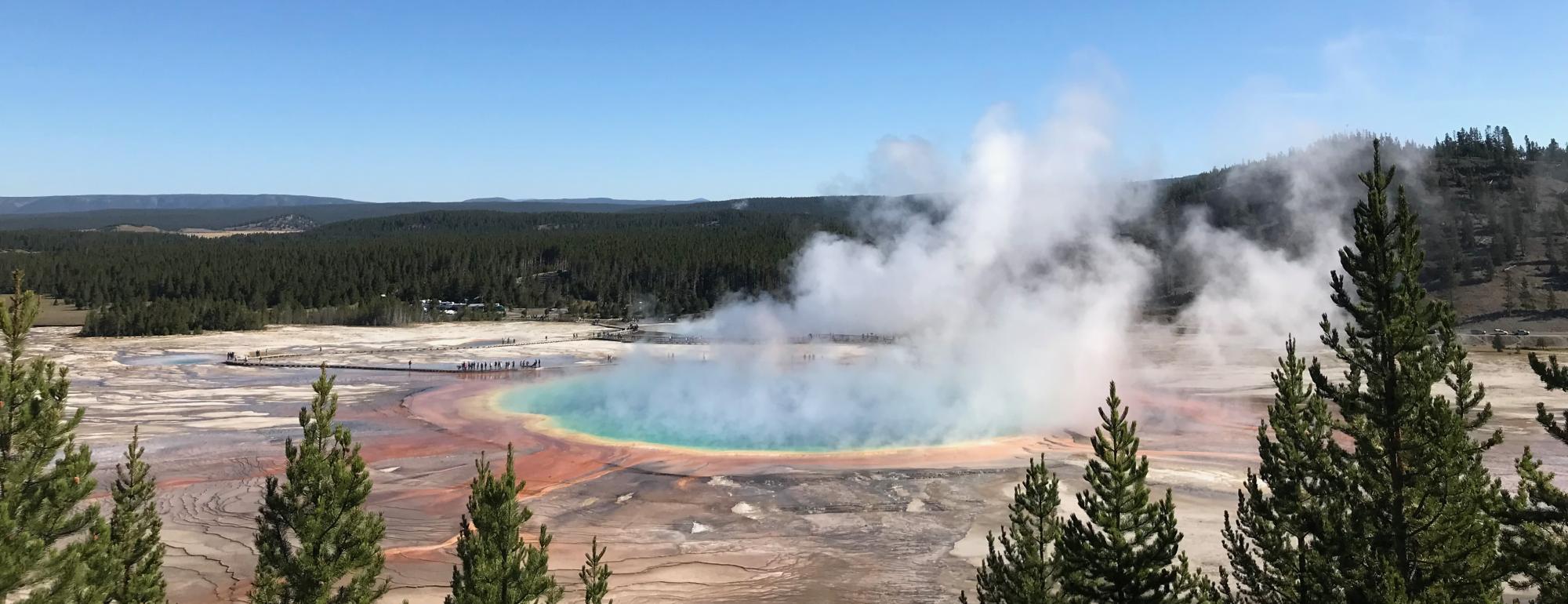News Archive 2020-2021
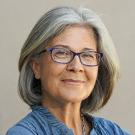
Isabel Montañez | National Academy of Sciences, 2021 Member
Isabel Montañez has been elected to the National Academy of Sciences. Her work has informed a better understanding of Earth’s ocean, land and atmospheric records of the past half billion years and suggests what the ancient carbon dioxide record may mean for future climate change. The National Academy of Sciences was established under a congressional charter signed by President Abraham Lincoln in 1863. It recognizes achievement in science by election to membership, and—with the National Academy of Engineering and the National Academy of Medicine—provides science, engineering, and health policy advice to the federal government and other organizations
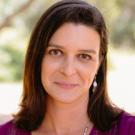
Tessa Hill | Hard Times for Hard Shells
From AAS: "Having a conversation about wildfires may be an unusual way to help educate people about climate change in our oceans. But for Northern California-based marine scientist and AAAS Fellow Tessa Hill, Ph.D., both topics are urgent and closely related. Deadly, fast-moving wildfires have touched nearly everyone in the region. And the fires’ link to climate change provides a non-threatening way for her to engage with her community about heat waves, both on land and in the oceans."
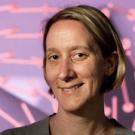
Magali Billen | Graduate Studies Announces the First Faculty Academy of Graduate Student Well-Being
Magali BIllen has been selected to participate in the Faculty Academy of Graduate Student Well-Being. The inaugural cohort of the academy was selected from a competitive pool of individuals and represents a variety of departments across campus. As part of the academy’s program, the selected participants will learn relevant scholarship on mental health and develop facilitation skills to lead conversations and seminars on well-being. These faculty members will go on to facilitate a graduate-level seminar within their departments to help graduate students enhance their well-being and professional success.
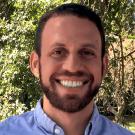
David Gold | NSF CAREER Award
David Gold has been granted a prestigious 5-year NSF "Early Career" award to continue his research on the interpretation of chemical biomarkers in the rock record: "An Evolutionary Framework for the Molecular Fossil Record". This grant supports David's continued use of genetics to identify what groups of living organisms have the ability to make various biomarkers that are used to trace the history of evolution, source rocks for petroleum, and pollution sources. David will also use the genetic data, calibrated to the rock record, to help pin when in the past each group gained the ability to make specific biomarkers. Early Career grants include a strong outreach component, and David will be developing courses to train early career geologists to use genetic tools for their own research. He will also be developing a mentoring program for promising Native American scholars, a group that has been historically harmed by geoscientists through land and resource theft.

Sarah Stewart | Massive Machines Are Bringing Giant Exoplanets Down to Earth
From Scientific America: "Scientists are using football-field-sized lasers, warehouse-sized electromagnets and other immense facilities to reveal the deep secrets of planetary interiors." The work of Sarah Stewart and others in the Center for Matter at Atomic Pressures (NSF Physics Frontiers Center) is featured in this article.
2022 Sea Grant John A. Knauss Marine Policy Fellowship Program Finalist | Carina Fish
Earth and Planetary Sciences graduate student Carina Fish is a finalist for the 2022 class of the Sea Grant John A. Knauss Marine Policy Fellowship program. The one-year fellowship places early career professionals in federal government offices in Washington, D.C. Knauss finalists are chosen through a competitive process that includes comprehensive review at both the state Sea Grant program and national levels. Carina's area of study is marine biochemistry/paleoceanography.
Researchers have taught a drone to recognize and hunt down meteorites autonomously | Robert Citron
From Universe Today: A team of researchers is now taking advantage of additional technology advances by testing out drones and machine learning for automated searches for small meteorites. Earth and Planetary Sciences postdoctoral scholar Robert Citron and his colleagues have tested their conceptual drone setup several times, mostly recently in the area of a known 2019 meteorite fall near Walker Lake, Nevada.
2021 NASA Earth and Space Science and Technology (FINESST) Award | Alba M. Rodríguez Padilla
Earth and Planetary Sciences graduate student Alba Mar Rodríguez Padilla's proposal “Testing Constituitive Laws for the Evolution of Off-Fault Deformation over the Earth Cycle” has been selected for funding as one of the Future Investigators in NASA Earth and Space Science and Technology (FINESST) Awards. Alba will be analyzing and modeling permanent deformation associate with growing faults in a variety of settings, ranging from Volcanic Tablelands in California, the Afar Rift in Ethiopia, and the Valles Marineris on Mars.
2021 Seismological Society of America Student Presentation Award | Alba M. Rodríguez Padilla
Earth and Planetary Sciences graduate student Alba M. Rodríguez Padilla has received a 2021 Student Presentation Award from the SSA. The award honors excellent poster or oral presentations at the SSA Annual Meeting. Nominated by meeting attendees, a three-person judging panel selected the 19 award recipients among the eligible pool of student presenters. Read Alba's abstract: “Beyond the Damage Zone: Characterizing Widespread Inelastic Deformation From Integrated Fracture, Aftershock and Strain Maps of the 2019 Ridgecrest Sequence”
2021 Chancellor’s Achievement Awards for Diversity and Community | Veronica Vriesman
Earth and Planetary Sciences graduate student Veronica Vriesman is one of the 2020-2021 recipients of the Chancellor’s Achievement Awards for Diversity and Community, in recognition for her efforts to enhance equity and inclusiveness within the campus community. The virtual presentation is available online.
2021 Diversity and Principles of Community Deanna Falge Award | Mandy Rousseau
Mandy Rousseau, Earth and Planetary Sciences staff undergraduate advisor and graduate program coordinator, is the recipient of the 2021 Diversity and Principles of Community Deanna Falge Award from UC Davis. Mandy is being acknowledged for her advocacy promoting diversity and equity through her work on the Anti-Racism Action committee, creating more inclusive faculty mentoring practices and student club guidelines, and creating a diverse student pipeline in STEM through partnerships with regional community colleges.
2021 North Pacific Research Board’s Graduate Student Research Award | Esther Kennedy
Earth and Planetary Sciences graduate student Esther Kennedy has been awarded the competitive North Pacific Research Board’s Graduate Student Research Award. Awards are granted to address scientific, technological, and socioeconomic issues relating to the research themes identified in the NPRB Science Plan. Esther will be using modeled oceanographic conditions to develop indicators of ocean acidification and temperature stress in Bering Sea king crab populations for use by fishery managers.

Isabel Montañez | 2021 UC Davis Prize for Teaching and Scholarly Achievement
Dr. Isabel Montañez is the 2021 recipient of the UC Davis Prize for Teaching and Scholarly Achievement. As is tradition, Chancellor May crashed (zoom-bombed) her course to announce the award. The UC Davis Prize, given annually, recognizes a faculty member who has demonstrated extraordinary dedication and achievement in undergraduate teaching and in research/creative activity. The underlying purpose of the Prize is to promote excellence among scholars at the forefront of knowledge who are making their expertise available to undergraduate students.
NOAA Climate and Global Change Postdoctoral Fellowship | Barbara Wortham
Earth and Planetary Sciences graduate student Barbara Wortham has been awarded a 2021-2023 NOAA Climate and Global Change Postdoctoral Fellowship. The goal of the fellowship is to train the next generation of leading researchers needed for climate studies. Barbara will be going to UC Berkeley to work with Daniel Stolper (Earth and Planetary Sciences) and Todd Dawson (Integrative Biology). Her research topic is "Assessing the role of global CO2 variability on plant function throughout the last 55ka in California."

Qing-zhu Yin | Dating the Dinosaur Pompeii
From the Egghead Blog: Northeastern China is home to one of the world’s most remarkable collections of dinosaur fossils. The Jehol biota contains fossils of dinosaurs, plants, insects and fish, many of them preserved in unusual detail with traces of skin and feathers, dating back to the Early Cretaceous period 101 to 143 million years ago. Yuting Zhong and Yi-Gang Xu of the Chinese Academy of Sciences in Guangzhou worked with Professor Qing-Zhu Yin and Associate Specialist Magdalena Huyskens at the UC Davis Department of Earth and Planetary Sciences to get better dates for the fossil deposits. The work is published in National Science Review.
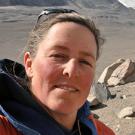
Dawn Sumner | Exploring Mars To Better Understand Earth
From NPR's On Point: Exploring Mars To Better Understand Earth. Was Mars once like Earth? Can you imagine the red planet once a verdant green? That might be stretching it a bit, but NASA scientists are on an ambitious hunt for evidence of ancient Martian microbes. What they discover could transform our understanding of life back here on Earth.

Geerat Vermeij | American Academy of Arts & Sciences, 2021 Member
Geerat Vermeij has been elected a fellow of the American Academy of Arts and Sciences. Geerat's election is in the area of evolution and ecology, recognizing his distinguished research contributions spanning paleobiology and paleoecology.

Sarah Stewart | New Scenario For How the Moon Formed
From Geology Bytes: Sarah Stewart uses computer-based dynamical simulations and lab experiments to create scenarios for the collision of a massive body with the Earth that can reproduce the composition, orbits, and spins of the Earth and Moon today. She believes a new kind of object called a synestia formed in the immediate aftermath of such a collision. Here she is in her lab with an instrument that can generate very high temperatures and pressures in a target to simulate conditions after the impact. Listen to Sarah Stewart on a New Scenario For How the Moon Formed.

Tessa Hill | Expansive Study Shows Seagrass Meadows Can Buffer Ocean Acidification
From UC Davis: Spanning six years and seven seagrass meadows along the California coast, a paper from the University of California, Davis, is the most extensive study yet of how seagrasses can buffer ocean acidification. “This buffering temporarily brings seagrass environments back to preindustrial pH conditions, like what the ocean might have experienced around the year 1750,” said co-author Tessa Hill.
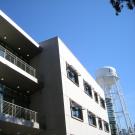
UC Davis Earth and Planetary Sciences Graduate Program
Following on the previous change in our department name, the graduate program in Geology has now also changed its name to the Earth and Planetary Sciences Graduate Program. From research on ocean acidification to the deep mantle water cycle, from the tectonics of the Caucuses Mountains to the tectonics on Enceladus, from experiments extracting the ages of cooling magma crystals to extracting the origins of complex life from biomarker genetics, this new name better reflects the wide range of research questions pursued by our faculty and graduate students.

UC Davis Earth and Planetary Sciences programs rank high nationally and in the world.
Quacquarelli Symonds, considered one of the most influential international university rankings providers, ranked several UC Davis Earth and Planetary Sciences programs within the top 20 nationwide: earth and marine sciences - 17th, geology - 18th and geophysics tied for 18th. Worldwide, geophysics tied for 29th, earth and marine sciences - 30th, geology - 31st.
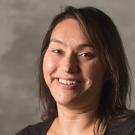
Sarah Stewart | Connections with Evan Dawson
From Connections, NPR Rochester: Astrophysicist Adam Frank says that science has united us during this very difficult year. Writing for NBCNews.com, Frank argues, "It is no overstatement to say that science saved our lives and our hope for the future. And it did so by overcoming all the denialists who attack its validity, dismiss its honesty and power, and repeatedly call for its funding to be cut." The NSF Center for Matter at Atomic Pressures is highlighted in this January 28th Connections podcast episode. Sarah Stewart is a guest, along with Rip Collins (Director of the Center) and Adam Frank.
Bilinski Fellowship at Bodega Marine Lab | Hannah Kempf
Hannah Kempf is one of ten recipients of the UC Davis Bilinski fellowship at Bodega Marine Lab for 2020-2021. Bilinski fellowships are awarded to outstanding doctoral students whose selected projects, based at the UC Davis Bodega Marine Laboratory, exhibit innovation, collaboration, and are a key component of the student’s final dissertation. Hannah is interested in how shellfish respond to climate change. At BML, her project will investigate how traditional ecological knowledge can help buffer shellfish against ocean acidification. To do so she will collaborate with Native scholars, and use genomics and shell structure tools.
Give Day | Earth and Planetary Sciences Student Support Challenge
The Department of Earth and Planetary Sciences has a matching Challenge opportunity due to the generosity of Margie and Tom Latham. 10 donations of any size will unlock these donor funds. The Earth and Planetary Sciences Student Support Challenge supports graduate and undergraduate students in earth and planetary sciences with the following priorities: graduate student summer stipends, undergraduate research experiences, graduate student equipment/technology needs, and maintenance of teaching equipment in the Department of Earth and Planetary Sciences. The Challenge ends on April 17th at 5:00PM.

Tessa Hill | Fellow of the American Association for the Advancement of Science
Tessa Hill has been elected a fellow of the American Association for the Advancement of Science (AAAS). The world’s largest general scientific society, the AAAS elevates members to the rank of fellow in recognition of their scientifically or socially distinguished efforts to advance science or its applications. Her AAAS citation reads: for her outstanding contributions to research, teaching and outreach related to processes in the past and present oceans based on geochemistry and paleobiology.


Isabel Montañez and Qing-zhu Yin | Class of 2020 AGU Fellows
Isabel Montañez and Qing-Zhu Yin are among the newly minted class of AGU Fellows. The Fellows program was established in 1962 and recognizes AGU members who have made exceptional contributions to Earth and space science through a breakthrough, discovery, or innovation in their field. Fellows act as external experts, capable of advising government agencies and other organizations outside the sciences upon request. AGU has elected fewer than 0.1% of members to join this prestigious group of individuals.

Isabel Montañez | Deep Past is Key to Predicting Future Climate, Scientists Say
From UC Davis: An international team of climate scientists, including Professor Isabel Montañez at the UC Davis Department of Earth and Planetary Sciences, suggests that researchers using numerical models to predict future climate change should include simulations of past climates in their evaluation and statement of their model performance. The report is published this week in the journal Science.

Tessa Hill | Unfold Podcast, Episode 6: Oceans Under a Changing Climate
From UC Davis: Oceans have always done us a favor by absorbing carbon dioxide from the atmosphere. But, increasingly, greenhouse gases are warming the ocean and changing its chemistry. All of this is putting marine species and ecosystems at risk, threatening food security and the livelihoods of people along its shores. In this episode of Unfold, we take a deep dive into the ocean to examine the effects of climate change. Dr. Tessa Hill is featured in this episode.
 Cathy Busby | 2020 MGPV Distinguished Geologic Career Award
Cathy Busby | 2020 MGPV Distinguished Geologic Career Award
Cathy Busby, Professor Emerita, has been awarded the 2020 Distinguished Geological Career Award from the MGPV (Mineralogy, Geochemistry, Petrology, and Volcanology) Division of the Geological Society of America. This award goes to an individual who, throughout his/her career, has made distinguished contributions in one or more of the following fields of research: mineralogy, geochemistry, petrology, volcanology, with emphasis on multidisciplinary, field-based contributions. The MGPV Distinguished Geological Career Award emphasizes a geologic and multidisciplinary approach.

Isabel Montañez | 2021 Francis J. Pettijohn Medal for Sedimentology
Dr. Isabel Montañez will be awarded the 2021 Francis J. Pettijohn Medal for Sedimentology from the Society for Sedimentary Geology (SEPM)! This award is given in recognition of Excellence in Sedimentology. Nominees for the medal are persons who have a significant record of outstanding contributions in sedimentary geology, including all aspects of sedimentology and stratigraphy. This also follows two other recent, prestigious awards to Isabel: The GSA Sloss Award in 2018, and the Jean Baptiste Lamarck Medal from the European Geosciences Union (EGU) in 2019.

Tessa Hill | For Red Abalone, Resisting Ocean Acidification Starts With Mom
From UC Davis: Study Identifies Traits of Climate-Resilient Red Abalone, With Implications for Farmed Abalone. Red abalone mothers from California’s North Coast give their offspring an energy boost when they’re born that helps them better withstand ocean acidification compared to their captive, farmed counterparts, according to a study from the Bodega Marine Laboratory at the University of California, Davis. Tessa Hill is a co-author on the study.
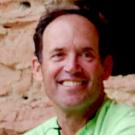
Jeff Mount | How California Became Ground Zero for Climate Disasters
From the NYTimes: The engineering and land management that enabled the state’s tremendous growth have left it more vulnerable to climate shocks — and those shocks are getting worse. The state’s size and geographic diversity expose it to an unusually wide range of extreme climate events. And its large population means that when disasters do strike, they are very likely to affect large numbers of people.

Sarah Stewart | A New Creation Story for the Earth and Moon
Thursday, November 12, 2020 - 6:30pm to 7:30pm (ET). An online lecture by Sarah Stewart, professor and MacArthur Foundation Fellow. Stewart will talk about the accidental discovery of a new type of astronomical object, called a synestia, that may save the idea of a giant impact and forever change the way you think about the birth of our planet. Hosted by Carnegie Science. For online event details, please visit Carnegie Science Events.


Curtis Williams and Qing-zhu Yin | Meteorites Show Transport of Material in Early Solar System
From UC Davis: New studies of a rare type of meteorite show that material from close to the sun reached the outer solar system even as the planet Jupiter cleared a gap in the disk of dust and gas from which the planets formed. The results, published this week in Proceedings of the National Academy of Sciences, add to an emerging understanding of how our solar system formed and how planets form around other stars. The consensus theory on how planets form is that they accrete from a disk of dust and gas that rotates around a new-formed star.
Evidence for the composition of this protoplanetary disk in our own solar system comes from chondrites, a type of meteorite made up of smaller particles, or chondrules, that collected together like a cosmic dust bunny. “If we understand transport, we can understand the properties of the disk and infer how the planets were built,” said Qing-zhu Yin, professor of earth and planetary sciences at the University of California, Davis, and co-author on the paper. Yin, UC Davis research scientist Curtis Williams, and their collaborators carried out a detailed study of isotopes from 30 meteorites. They confirmed that they fell into two distinct groups: the noncarbonaceous chondrites as well as other, more common types of meteorite; and the carbonaceous meteorites.
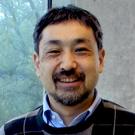
Ryosuke Motani | Ichthyosaur’s Last Meal Is Evidence of Triassic Megapredation
From UC Davis: When a specimen of the ichthyosaur Guizhouichthyosaurus was discovered in Guizhou province, China, in 2010, researchers noticed a large bulge of other bones within the animal’s abdomen. On examination, they identified the smaller bones as belonging to another marine reptile, Xinpusaurus xingyiensis, which belonged to a group called thalattosaurs. Xinpusaurus was more lizardlike in appearance than an ichthyosaur, with four paddling limbs. “We have never found articulated remains of a large reptile in the stomach of gigantic predators from the age of dinosaurs, such as marine reptiles and dinosaurs,” said Ryosuke Motani, professor of earth and planetary sciences at the University of California, Davis, and co-author on the paper. “We always guessed from tooth shape and jaw design that these predators must have fed on large prey but now we have direct evidence that they did.” The fossil is described in a paper published Aug. 20 in the journal iScience. Read more at Reuters | CNN | National Geographic | AFP

Sarah Stewart | Understanding Matter at Atom-Crushing Densities
From UC Davis: University of California, Davis will be part of a new National Science Foundation (NSF) Physics Frontier Center focusing on understanding the physics and astrophysical implications of matter under pressures so high that the structure of individual atoms is disrupted. The Center for Matter at Atomic Pressures (CMAP) will be funded with $12.96 million from the NSF. It will be hosted at the University of Rochester in collaboration with researchers at UC Davis, MIT, Princeton, the University of California, Berkeley, the University of Buffalo and Lawrence Livermore National Laboratory.
The Physics Frontiers Centers (PFC) are university-based centers funded by the NSF to enable transformational advances in the most promising research areas. “This collaboration is focused on developing a new area of physics focused on the properties of matter under extreme pressures” said Sarah T. Stewart, professor of earth and planetary sciences at UC Davis and co-principal investigator on the project. “Most of the work is motivated by the diversity of the interiors of planets, to understand their formation and evolution.”
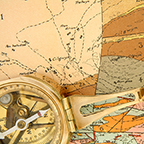 UC Davis Geology Graduate Program | GRE Scores Permanently Dropped
UC Davis Geology Graduate Program | GRE Scores Permanently Dropped
The Geology Graduate program has permanently dropped GRE scores from the required application materials. Starting August 2020, students applying to the Masters and PhD Programs in Geology will no longer be asked to submit GRE scores. This change is in response to strong evidence that GRE scores do not predict the success of students in graduate school and the recognition that this requirement is one barrier to increasing diversity of graduate students in the program.

